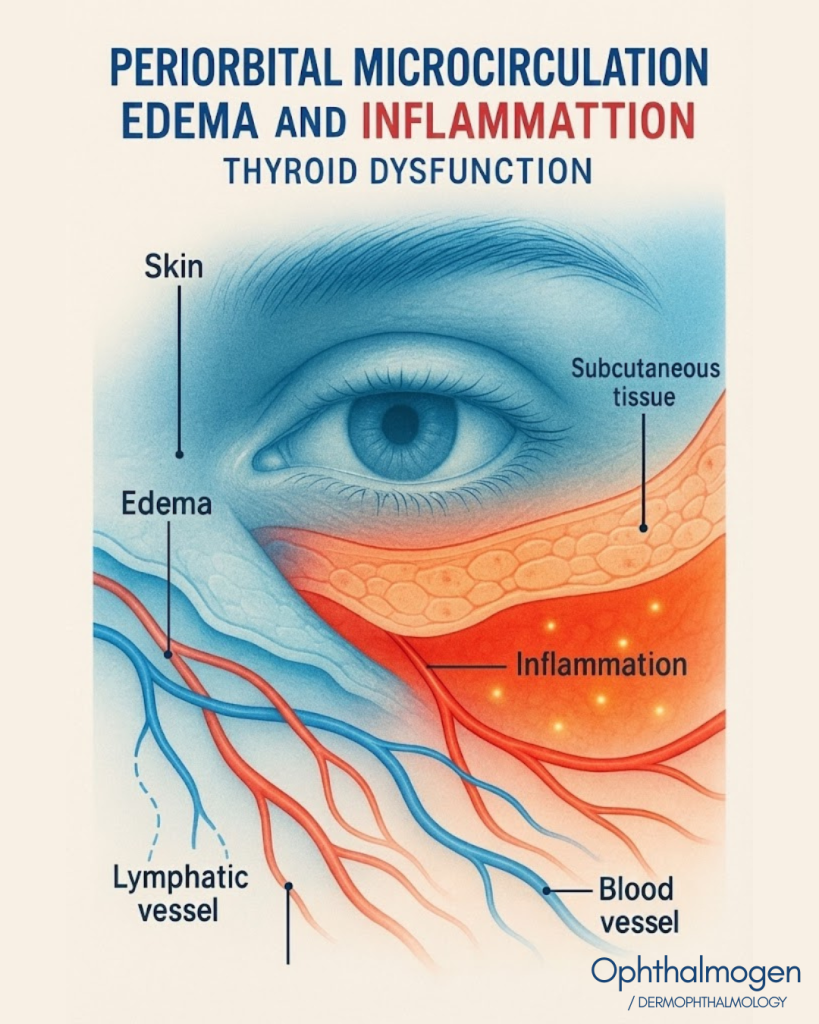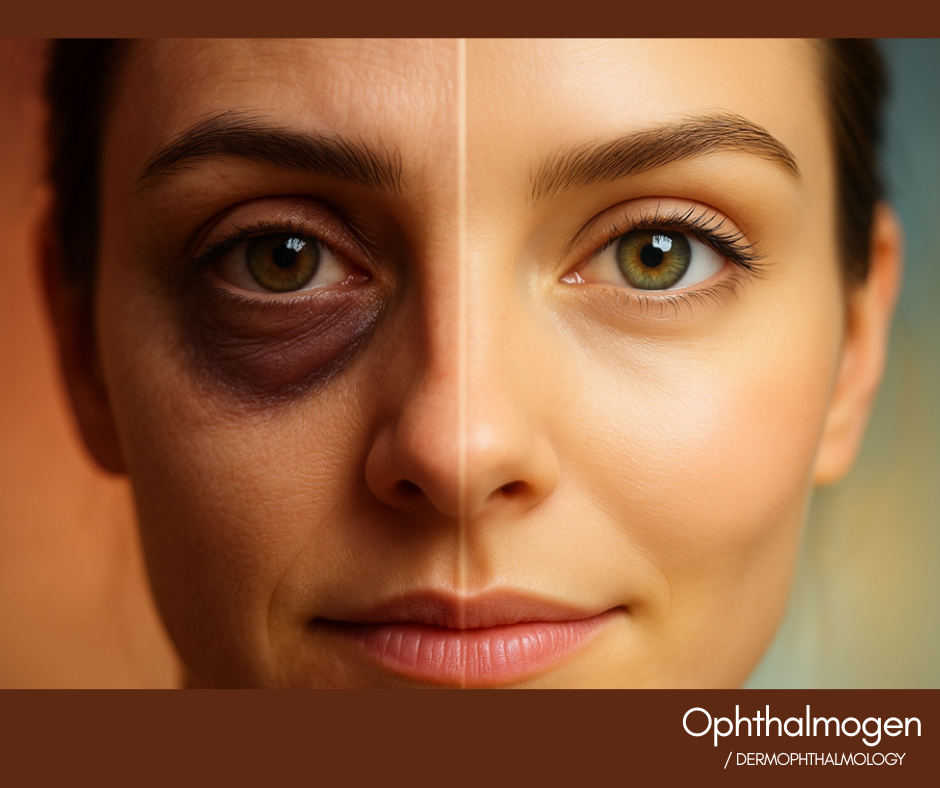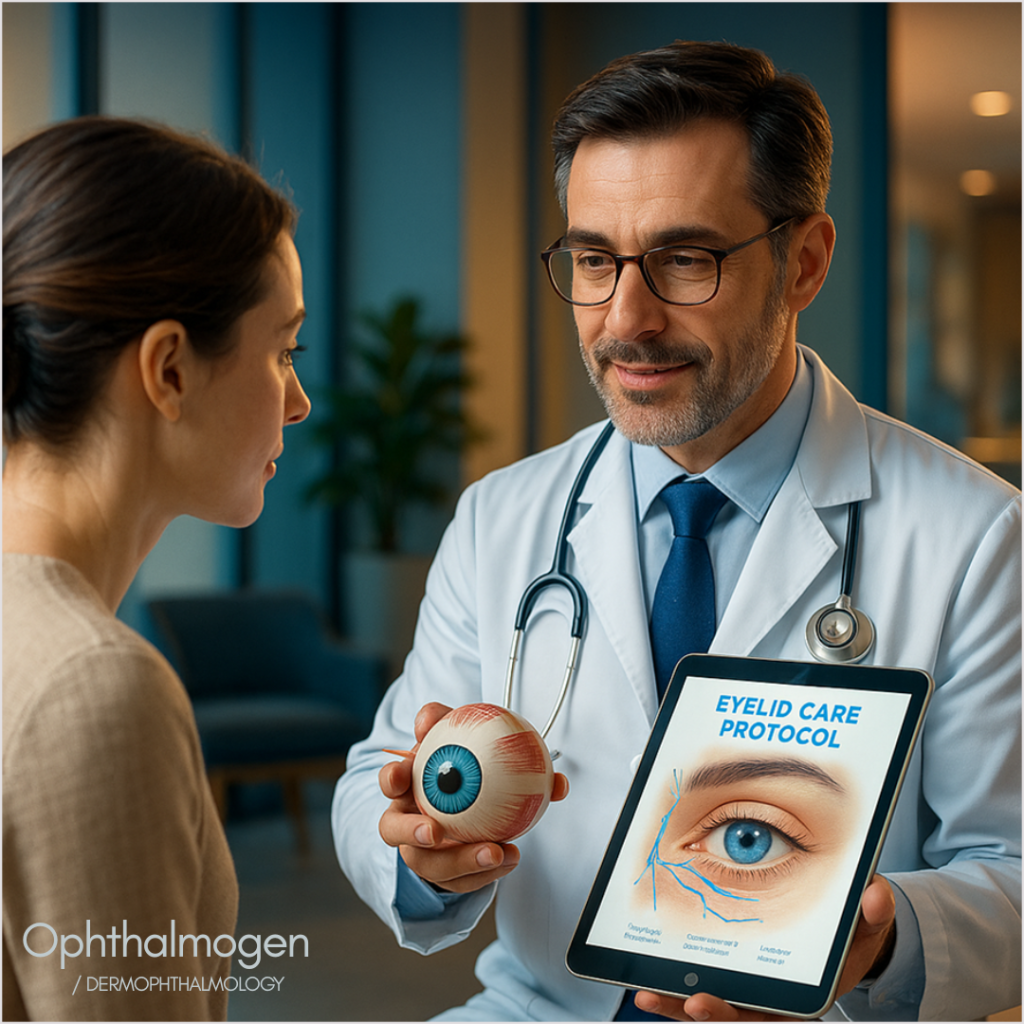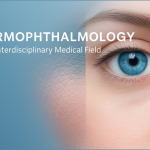
Introduction
Thyroid disorders affect far more than metabolism, weight, or energy levels. One of the earliest and most visible signs appears in the eyes: puffiness, tired appearance, and dark circles under the eyes.
In patients with hypothyroidism or hyperthyroidism, dark circles are not just a cosmetic problem. They are a marker of endocrine imbalance and often reflect fluid retention, inflammation, or altered microcirculation.
Historical Perspective
- Ancient Greece: Hippocrates described “ophthalmopathy” in patients with goiter, recognizing the connection between thyroid and the eyes.
- 19th century: Robert Graves (Ireland, 1835) and Karl von Basedow (Germany, 1840) described the exophthalmic goiter, linking thyroid disease with periorbital changes.
- Since then, the term Thyroid Eye Disease (TED) has been established as a recognized clinical entity.
Thyroid Disorders & Their Ocular Impact
Hypothyroidism (often Hashimoto’s thyroiditis)
- Reduced thyroid hormone production.
- Systemic symptoms: fatigue, weight gain, cold intolerance, dry skin.
- Ocular manifestations: fluid retention, periorbital puffiness, and dark circles caused by edema and impaired circulation.
Hyperthyroidism (often Graves’ disease)
- Excessive thyroid hormone production.
- Systemic symptoms: weight loss, insomnia, anxiety, palpitations.
- Ocular manifestations: exophthalmos (protruding eyes), tissue inflammation, redness, tearing, and periorbital dark shadows.
Hashimoto Thyroiditis
- Autoimmune thyroid inflammation, more common in women.
- Leads to chronic fatigue and heavy periorbital appearance with dark circles.
Graves’ Ophthalmopathy
- Occurs in 25–30% of patients with Graves’ disease.
- Symptoms: eyelid swelling, dark circles, exophthalmos, and in severe cases, double vision.

Pathophysiology – Why Dark Circles Appear

- Hypothyroidism → fluid retention and tissue edema → puffiness and dark discoloration.
- Hyperthyroidism → exophthalmos, inflammation of orbital tissues, venous congestion → periorbital shadows.
- Chronic inflammation → thinning of periorbital skin, visible veins, darker appearance.
- Associated conditions → dry eye, blepharitis, and chronic tearing further aggravate circles.
Epidemiology & Studies
- Hypothyroidism affects 4–10% of the general population; Hashimoto’s thyroiditis affects about 1 in 10 women during their lifetime (Vanderpump MPJ, Lancet 2011).
- Hyperthyroidism affects 1–2% of women; 25–30% develop Thyroid Eye Disease (Bartalena L, NEJM 2021).
- Dark Circles & Thyroid:
• Thyroid Journal, 2016 : TED patients showed significantly higher rates of periorbital pigmentation.
• Frontiers in Endocrinology, 2020 : hypothyroid patients frequently exhibited periorbital edema and dark circles.
• Eye, 2022 : 27% of Graves’ ophthalmopathy patients reported dark circles independent of exophthalmos.
Aesthetic & Psychological Dimension
Patients with thyroid disease often report:
- “I look constantly tired, even if I rest.”
- “Even after treatment, my eyes still look heavy.”
Dark circles: - decrease self-confidence,
- make patients look sick or fatigued,
- lead to overuse of cosmetic concealers,

Dermophthalmologic Protocol
Hormone replacement or anti-thyroid drugs are essential, but not enough. Supportive ocular hygiene and care improve both comfort and appearance.
- EYE10 self-heating masks → improve microcirculation & relieve congestion.
- Ophthalmogen Gel massage → stimulates blood flow, reduces puffiness.
- Ophthalmogen Spray → hydrates eyelids and lashes, reduces inflammation and Demodex.
- Visionlux Plus / Thealoz DUO → artificial tears for dry eye relief and antioxidant protection.
- Allvita Eyes + Selenium → nutritional support for retina, ocular surface, and thyroid health.
- Dermalife 520 hydrogel masks → instant cooling, decongestion, and cosmetic improvement.

Case Studies
- Female, 44 years old, Hashimoto’s hypothyroidism → persistent dark circles and puffiness. With Ophthalmogen Gel + EYE10 + artificial tears → significant improvement after 2 months.
- Male, 52 years old, Graves’ disease → exophthalmos, tired look. With Ophthalmogen Spray + Dermalife 520 hydrogel masks → reduced puffiness, brighter eyes.
FAQ
- Will dark circles disappear once thyroid function is stabilized?
Not always. Hormonal balance helps, but local care is required for visible improvement. - Can thyroid disease endanger the eyes?
Yes, particularly in Graves’ ophthalmopathy. Regular ophthalmic follow-up is necessary. - Do cosmetics (concealers, creams) help?
They cover temporarily, but they don’t address puffiness, edema, or inflammation. - What daily steps improve the condition?
Ophthalmogen Spray, Gel massage, EYE10 masks, artificial tears, hydration, and sun protection. - Are dark circles purely cosmetic in thyroid disease?
No. They are a visible sign of systemic and endocrine dysfunction.
Conclusion
Dark circles in thyroid disorders are not random or merely cosmetic. They reflect fluid retention, inflammation, microcirculatory changes, and hormonal imbalance.
By combining endocrinology treatment with DermOphthalmology care, patients can achieve:
- better visual comfort,
- a brighter, healthier look,
- improved quality of life.
Discover the full Ophthalmogen range at www.ophthalmogen.com and Dermophthalmology at www.Dermophthalmology.com
Give your eyes the care and beauty they deserve.






